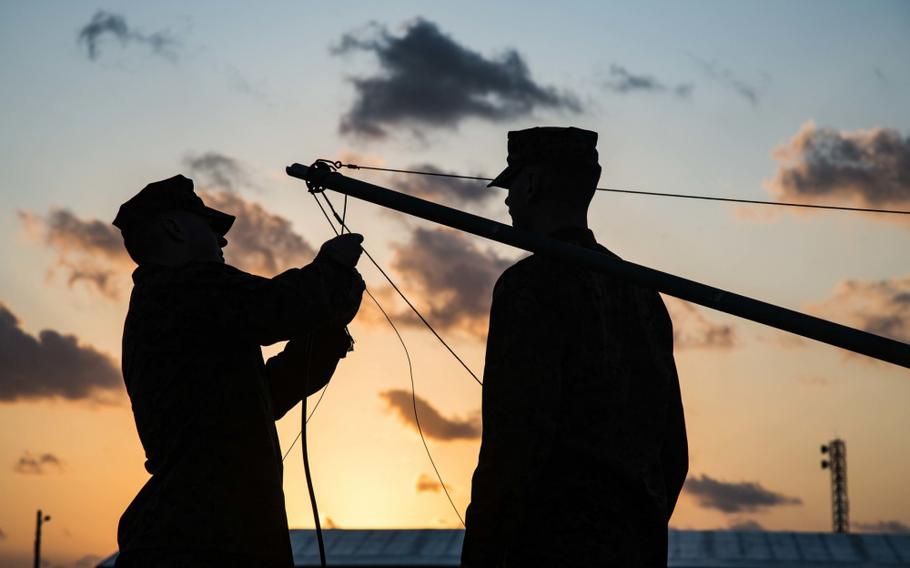Community News
3d Marine Division conducts high-frequency communications training with 1st Marine Division
Marine Corps Installations Pacific January 21, 2020

U.S. Marine Corps photo by Lance Cpl. Christian Ayers ()
CAMP SCHWAB, Okinawa, Japan – U.S. Marines with 2nd Battalion, 2nd Marine Regiment, currently attached to 4th Marine Regiment, 3rd Marine Division, under the Unit Deployment Program, conduct high-frequency, long distance communications training with Marines from 1st Marine Division from Camp Schwab, Okinawa, Japan, to Camp Pendleton, California, Jan. 14, 2020.
This complex training helps 1st and 3rd Marine Division maintain a low electromagnetic signature that is virtually impervious to meaconing, jamming, and interference, which allows for distributed operations without detection in the operating environment.
“The Marines need to know what they are doing when it comes to long distance HF training because that’s what is used in [an infantry] unit,” said U.S. Marine Corps Sgt. Chase Schmidt, an assistant radio chief with 2/2. “We are pushing farther than we are used to so we can see how our Marines handle it.”
Marines are expected to quickly and effectively use HF in order to communicate with other Marines that are in a different country, or in a remote location.
According to Schmidt, troubleshooting is an important step when using HF. It’s a difficult process, therefore, he must be sure that his Marines know what they are doing when communicating with their allies over long distances in case a quick response is needed. Having the ability to do so allows Marines to quickly and efficiently communicate in a broad spectrum of threats or during natural disasters.
Long distance communication training increases 3rd Marine Division’s combat readiness and lethality by ensuring the Marine Corps can successfully communicate with itself and its allies around the globe.
Photo Caption: U.S. Marines Sgt. Chase Schmidt (left) and Cpl. Jacob Worshan set up an antenna during a long distance, high-frequency communications training event held on Camp Schwab, Okinawa, Japan, Jan. 14, 2020. This training between 1st and 3rd Marine Division allowed both units to train in HF communications over the Pacific ocean. The training helps the units maintain a low electromagnetic signature that is virtually impervious to meaconing, jamming, and interference, which allows for distributed operations without detection in the operating environment. Schmidt, a native of Gulf Breeze, Fla., and Worshan, a native of Calhoun, Ga., are radio operators currently under 4th Marine Regiment, 3rd Marine Division.